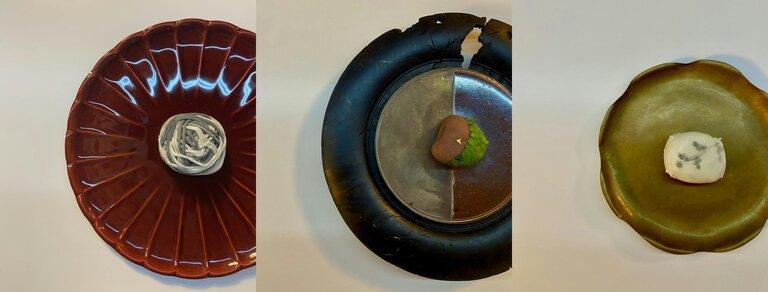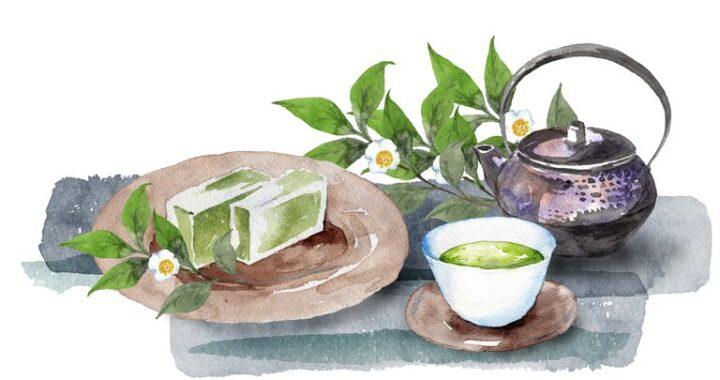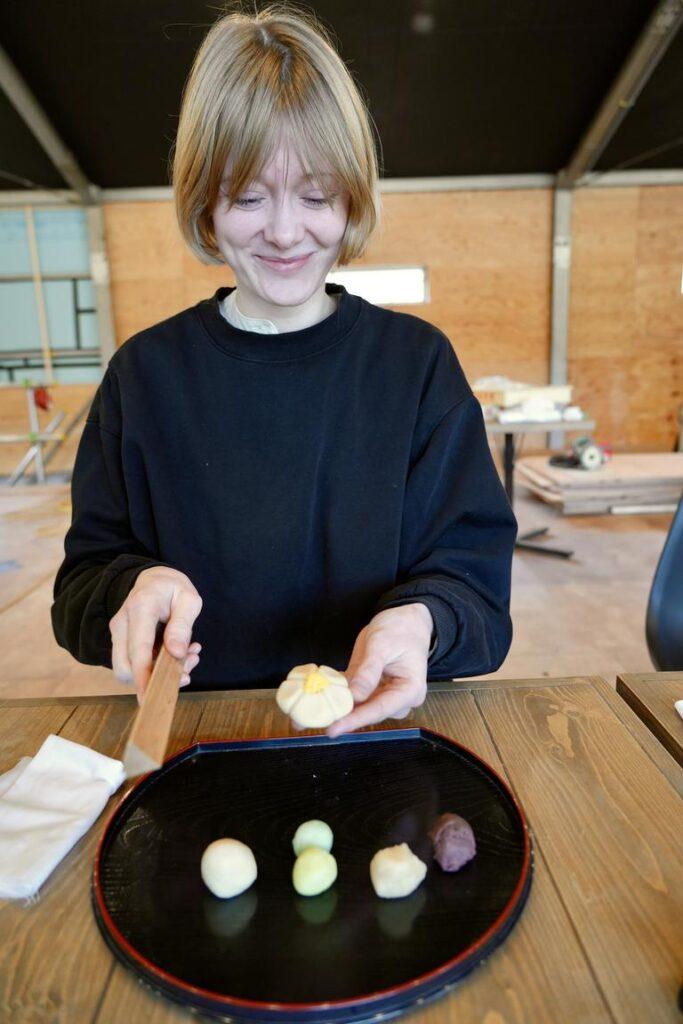Hello, fellow tea lovers! My name is Kirstine, but I usually go by Kia when I find myself in Japan. I am a tea enthusiast, a Japanese studies student, and a die-hard wagashi lover from Denmark. I also have the great pleasure of being intern #165 at Obubu!
For a while now, I have been utterly infatuated with wagashi. I have always had a sweet tooth, and during my time as an exchange student in Kyoto in 2023, I found myself in awe of the number of shops in town selling traditional Japanese sweets. Unknowingly, I had landed in the capital of wagashi or kyogashi (Kyoto-style sweets)! Initially, what fascinated me was the shapes and textures that I was unfamiliar with as a Dane: colourful dango, pillow soft daifuku, fish-shaped taiyaki, jellylike anmitsu-desserts.
Wagashi (和菓子) translates to Japanese-style sweets and originally dates back to the Heian period (794-1185), when sweets were eaten during court ceremonies and events. Wagashi has continuously evolved with the times, influenced heavily by exchanges with China, the development of tea ceremony and the introduction of Western confectionery.
In the 17th century, when Kyoto was still the capital of Japan, wagashi evolved and became increasingly refined. For this reason, wagashi from the Kyoto region, also known as kyogashi, are known to this day for their high quality and elegance. Later, in the Edo Period (1603-1867), wagashi became cemented in Japanese culture due to increased sugar imports, the flourishing of wagashi shops near temples and shrines, and particularly the use of wagashi for gift-giving on special occasions.
Commonly speaking, wagashi can be divided into two rough categories, namely higashi (干菓子), accounting for dried sweets and candies, and namagashi (生菓子), literally translating to ‘raw sweets’. Most of these wagashi are made using plant-based ingredients such as glutinous rice flour, anko, a sweetened bean paste, kinako soybean powder, agar for firm or gelatinous textures, and sugar. Some wagashi makers also take note of current trends and incorporate non-Japanese elements such as ice cream, custard, and chocolate in their confections.

Especially the beauty of jô-namagashi (上生菓子), literally elevated namagashi, I found at tea houses in Kyoto are intriguing to me. Jô-namagashi refers to a very delicate and beautiful type of wagashi that is also used in the Japanese tea ceremony or sadô (茶道). Their appearances with stunning motives and exciting textures are deliberated carefully to reflect an aspect of the current season. This consideration of seasonality struck a chord with me when I encountered it. Denmark, just like Japan, has four rather distinct seasons. However, I find it endlessly charming how Japanese confectionary simultaneously follows and commemorates the changing of seasons in their appearance and ingredients. For instance, we have nerikiri (練り切り), which is a type of wagashi made by kneading and mixing sweetened white bean jam and glutinous rice flour to form konashi. This dough is then shaped or moulded into seasonal motifs, such as cherry blossoms in the springtime.
In addition to the attention wagashi makers put into honouring the seasonality of wagashi, I admire the overall craftsmanship that goes into wagashi-making and how it is tied closely to other artisan professions. For what is wagashi without tea? Or the beautiful ceramics used to present these edible pieces of art? Wagashi captivates the senses, embodies traditional artistry, and is significant in Japanese culinary culture.
In the following blog posts, I wish to celebrate the art form of wagashi by highlighting specific sweets that represent each of the four seasons and delicious Obubu teas to enjoy alongside them. I am a firm believer in the importance of exiting our senses, and I hope you will join me as I dive into the gorgeous and delightful world of seasonal wagashi!

References
Nakayama, K. (2001). Wagashi – Treats For All Seasons. Japan Quarterly, 48(2), 64–74.


